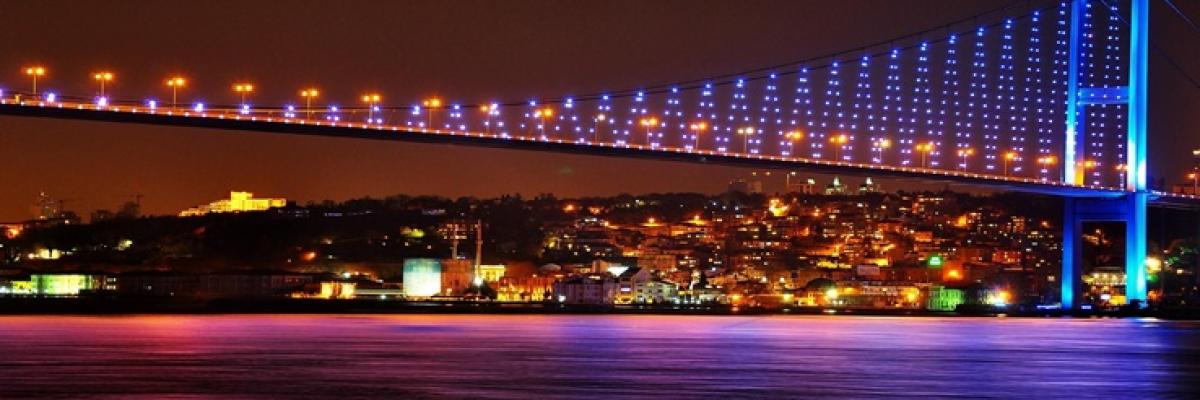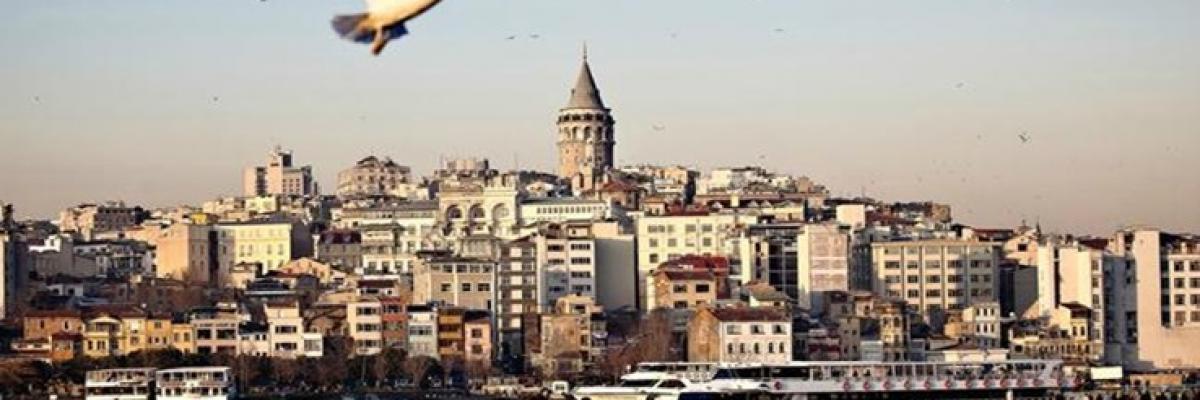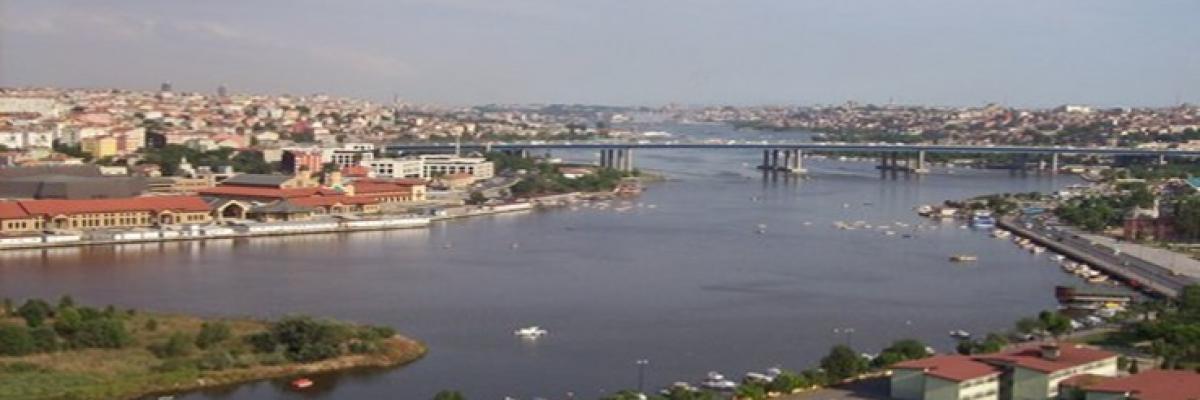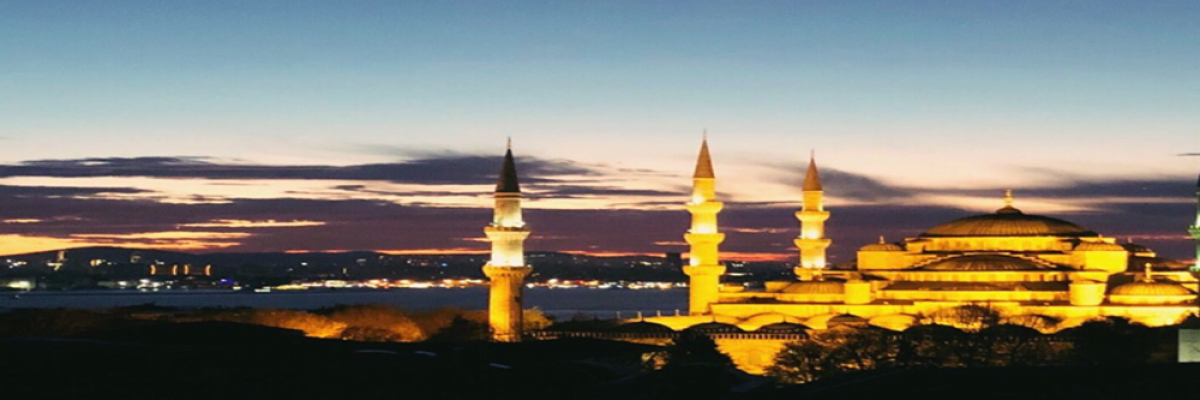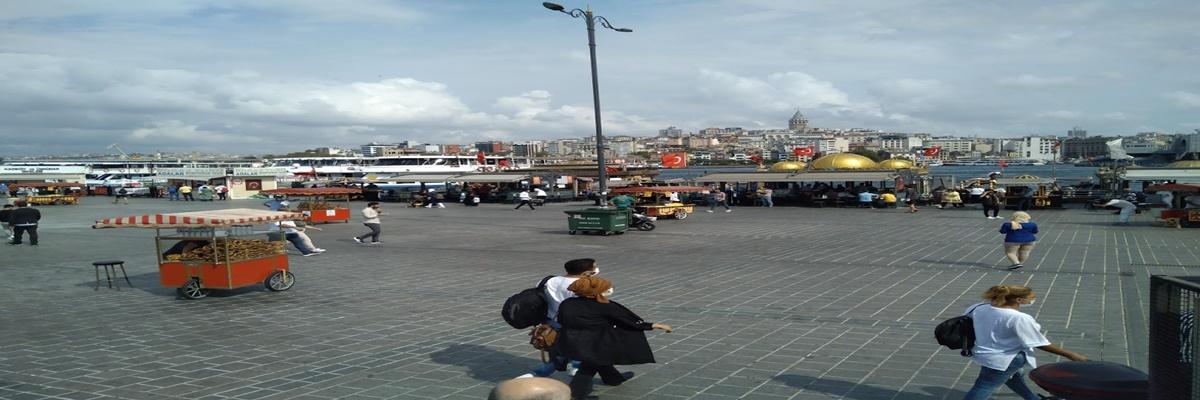Adıversıtyofhealthtourism
A Diversity of Health Tourism; Thermal Tourism

In societies where healthy life is important and encouraged, people, in the presence of a protected natural environment, suitable climate, sun, adequate infrastructure and superstructure, effective social and cultural environment opportunities / activities and beneficial use features of thermal waters, under the control of the physician, and other complementary treatments, , fitness, entertainment, etc. They seek benefits by going to thermal facilities (spas) from where they are located in order to engage in activities that protect human health, to balance wear, to treat and rehabilitate diseases. Within the balance of supply and demand, this tourism dynamism, which develops relatively rapidly, is called "thermal tourism", and its application together with other treatments is called "health and thermal tourism". Thermal tourism can be used together with other tourism types or also throughout the year.
Aware of the fact that healthy life is a value, people in developed and socially prosperous societies travel to different regions if necessary to protect their health. This concept named as "health tourism";
a) Thermal (hot spring) tourism
b) Medical (medical) tourism
c) SPA / wellness tourism
d) It consists of different applications such as elderly and disabled tourism.
According to the Ministry of Culture and Tourism, thermal tourism is "a tourism movement that includes cure practices that take place together with treatments such as physical therapy, rehabilitation and exercise, diet, in the presence of expert physicians due to the factors brought about by thermal waters, mud, climate and natural conditions around the spring". In this definition, some requirements for thermal tourism have found their place. These;
1. Existence of a natural water source with thermomineral in the region for thermal tourism (hot water, mineral water, gas, special natural mud-peliod)
2. The richness (eg heat) and continuity of the content of this natural resource
3. It is important to have the necessary environmental climate for this. The region's air temperature, humidity, wind strength and speed, solar radiation and similar climatic factors may have very different contributions or negatives to thermal tourism.
In thermal tourism, spa treatments are applied in certain cures. Curing concept; It refers to the method of treatment applied by administering the treatment agent in a certain dose, serially, regularly and repeatedly for certain periods. Within the scope of spa treatments, there are applications such as physiotherapy, thalassotherapy (treatment in sea water), hydrotherapy and exercises, balneotherapy (treatment with hot spring water) and peloidotherapy (medical mud therapy), and climatherapy. These concepts are defined as follows in the thermal springs regulation by the Ministry of Health:
- Balneotherapy: The use of thermal mineral waters, peloids and gases for therapeutic purposes in the form of a treatment cure with hot springs, springs and steam inhalation methods,
- Climatherapy (climate therapy): Systematic, dose-adjusted, cures of heat exchange, humidity, wind speed, intensity and direction, sunlight and similar season / climate factors,
- Thalassotherapy (treatment in sea water): The climatology of the seas and its content in the form of cures,
- Peloidotherapy (medical mud treatment): The preparation of peloids from organic-inorganic materials in the form of a balneotherapy form of cures after natural geological and / or biological activities,
- Mineral waters: Waters with proven physiological and therapeutic aspects, which come to the earth through spring or borehole-gallery, contain at least 1 gram of ionized mineral per liter, are not contaminated and are not contaminated by chemicals,
- Thermal Water: Water whose temperature at the source of water is 20 ° C and above,
- Hot spring waters include hot and mineral waters.
The issue that associates these treatments with tourism is that people travel at home and abroad to get these services from where they live to where these services are provided. In addition, revealing a certain accommodation need necessitates the formation of hotels or similar accommodation businesses in the places where these services are provided.
Thermal tourism centers
Basic elements of a healthy life today; To learn the protection of health and to try to apply it, to stay fit, to get away from harmful habits and to learn the rules of healthy eating, to be treated quickly and if possible in high quality comfortable hygienic environments and to receive rehabilitation services. Especially under the supervision of a doctor, the trips made from the places where people live to thermal facilities (hot springs) in order to benefit from the sun, effective sociocultural richness and the health-giving properties of hot mineral waters and other supportive treatments in an undisturbed natural environment is called thermal tourism.
Development of spas in the world and Turkey
The story of benefiting from thermal mineral waters dates back to 5 thousand years ago. In Astek and Native American societies, thermal waters have been linked to their miraculous healing power with their religious power. Throughout the ages, human beings have used thermal waters as a basic therapeutic element for theological rituals, hygiene, rejuvenation / rest and rehabilitation purposes. These beliefs and practices are more pronounced in the continents where thermal zones are located. (American continent, Europe, China, Japan). However, Europe is the continent where thermal applications are most developed and moved to modern dimension (France, Italy, Germany, Austria, Hungary). Thermal springs in Europe have been preserved for years, have been restored and further developed, so modern hot springs and healthy living sites have been created, and thermal facilities have become an indispensable source of health, habits, cultural reflex and lifestyle. Especially in Germany, hot springs have developed in the last two decades and have made significant contributions to the country's economy. More than 300 thousand people in Germany work in nearly 500 officially certified spa, sea (thalassotherapy), climate cure (treatment) centers, and the current bed capacity of these facilities has reached one million. An average of 15 million tourists come to these facilities annually, 26 medical faculties provide training on balneology as a specialty, and the staff that the relevant sectors need in terms of specialist physicians, therapists and supportive are trained here. This is done by trained personnel in an intense amount of medical research, and the treatment methods and variety are increased. BadFussing, BadGriesbah, Munich Erding, Baden-Baden are important spa cities of Germany. Among these, BadFussing is the largest spa city in Europe, with five cure centers, dozens of hotels, cure areas, riding areas, concert halls, hospitals, clinics, sanatoriums. There are 23 thousand beds in BadFussing, which is located on an area of 70 square kilometers. The total area of the thermal pools is 10 thousand square meters and they were built by local governments. Geothermal spring water with a temperature of 57 C is distributed by a platform established by public institutions. Most of the hotels are designed as sole proprietorships. It is possible to receive services from the facilities throughout the year, and 2/3 of the guests are developed for spa cure / treatment. Treatment costs are high and package tour fees are around 500-2000 Euros depending on the period and periods. Austria has 80 wellnesses, 750 spas, 550 accommodation facilities and 81 spa facilities, and is the fastest developing country in Europe. There are 104 hot springs in France, 300 in Italy, 128 in Spain, 3000 in Japan and 210 in the USA.
In thermal facilities, the existence of sustainable and sufficient mineral hot water, the formation of the necessary lower / upper systems related to the buildings according to the application and standards, the existence of a market that will create the need, ease of access (the thermal hotel should be at most 100 km from the airport, etc.), pleasant climate, Protected-natural environment, sparkling sun, beautiful air, silence, peaceful social relations, exercise, shopping / entertainment diversity, thermal springs and thermal tourism can be listed as good features. Thermal facilities should be established with expert architects, city planners, geologists and map planners according to these features. If the facility cannot be built in terms of the evaluated thermal water source, the hot mineral water can be moved to the area where the facility will be built for 1-5 km without losing its feature.

Thermal Tourism in Turkey
Our country is located on the geothermal zone and has geothermal resources and thermal springs of various richness. In our country, there are nearly 350 geothermal fields and more than a thousand natural sources with different temperatures and flows. In this sense, our country is the 4th country in the world and one of the first countries in Europe in terms of different healing geothermal water diversity and hot spring / thermal facilities. For our country, 10% of geothermal resources are suitable for electricity generation (90-287 ºC) and the rest are suitable for other applications. Housing, greenhouse, thermal facility heating and drying (50-110 KonutC) areas with a temperature of 38%, the rate of areas that can benefit from thermal tourism and balneological applications is 52%. Currently, the heating of more than 150 thousand residences and nearly 350 thermal springs in nearly 20 towns, especially Balçova, Afyon, Afyon Sandıklı, Afyon Gazlıgöl, is carried out by thermal sources.
Thanks to thermal tourism, a significant contribution is made to the country's economy with interregional development, employment, tourism lasting 12 months, profitability and added value. In our country, there have been considerable developments in health tourism, thermal tourism investments and awareness of thermal springs in the last two decades. Thermal tourism is increasing its share in all tourism investments, in terms of increasing the types of tourism and enabling tourism activities for 12 months. With the diversity of impact / usage area and economic return of thermal tourism, a large market is seen in Izmir (Balçova), Central, Sandıklı, Gazlıgöl and Bolvadin thermal facility areas in Afyon, Kızılcahamam region in Ankara, Ayaş; New modern hot springs were built in Karahayıt, Aksaray, Denizli, Aydın, Balıkesir, Hatay and many other cities and put into operation. There has been a significant increase in thermal facility investments in the last decade, thermal complexes and spa environment, infrastructure services in terms of establishment logic, landscaping, treatment systems and related investments, personnel employment, other equipment, technology uses, business, organization and promotional marketing activities has quickly become visible in the economy. With new investments, the number of thermal beds in Afyon and its vicinity approached to twenty thousand figures. The total number of thermal beds in our country has exceeded 60 thousand.
With all the additions / changes made in the first published Hot Springs Regulation (24.07.2001) in the following years (2003-2004), standards have been brought to the thermal springs in many aspects (determining the capacity and characteristics of the facilities, rehabilitation and treatment methods, questioning the standards of the facilities, licensing ...) Currently, there are 155 licensed spa facilities across the country, but nearly 400 facilities are at the stage of completing the licensing procedures-despite using hot spring water. Within the scope of the Geothermal Resources and Natural Mineral Waters Law No. 5686, which was put into effect in 2007, private administrations and governorships were authorized with thermal tourism investments monitoring and permits. These resources belong to the state. Searching and operating is subject to license and is subject to the permission of the state and the principles specified in the law.
Medical Definition and Chemical Classifications
Geothermal resource: Places where water, steam and gases that are above average temperature and may contain large amounts of molten material and gas are obtained.
Natural Mineral Water: Drinking water that is used for therapeutic and healing purposes with its rich mineral / salt content and other components (1 g / L).
Geothermal (Hot-Thermal) Water: Those whose temperature is above 20 ° C,
Thermomineral Water = Geothermal Water
Special Balneological Waters: These are liquids with special mineral content above normal values. These;
Carbon dioxide (waters containing free CO2 dissolved 1 g / L), sulfur, fluoride, iodine, acratothermal (low mineral value but very high temperature), akratopegal waters (low mineral value but temperature below 20 C), radonated water ( Radon beams above 666 Bq / L) and salts (waters containing NaCl over 14 mg / L).
Spa Treatment Methods
Thermal springs, spa hotels, cure centers, sports complexes, recreational areas, etc. The structure formed by additions is called thermal complex. These complexes; These are facilities that have appropriate infrastructure and superstructure that ensure that thermal treatment, accommodation, rest, entertainment, sports and cure applications that can be continued for 10-24 days can be performed all year round and that the needs and requests are met in the best way. For this reason, it has a different structure and size than other tourism hotels. Thermal hotels; Thermal pools, spas, baths, cure centers-treatment clinics, recreational areas and other hotel accommodation and living areas constitute healthy and well-being areas.

Usage Types of Thermal Facilities for Health Purposes Today
- Protection (healthy aging, delaying aging, being young and fit, strengthening immunity)
- Treatment (curative, supportive care, symptom relief treatment, focusing on physical problems and making life quality)
- Rehabilitation (medical, post-traumatic, postoperative, regulatory treatment after nerve / musculoskeletal system diseases, contribution to recovery after cardiovascular diseases, support after respiratory failure and similar problems)
- Rest, recreation, entertainment
- Health and sociocultural (wellness, fitness, relaxation-stretching, coping with stress, delaying aging, combating obesity, other complementary and individual supportive medicine methods) can be evaluated as use.
Other complementary methods that can be integrated into thermal cure therapy are:
1. Conventional methods: Physiotherapy, medical and aromatherapy; complementary and individual protective applications, other alternative medicine methods, massage, exercise, herbal therapy, acupuncture and the like.
2. Support systems; wellness coaching, psychology improvement sessions, diet and willpower training, a daily life and life programming seminars and so on. in the form.
The Therapeutic Properties, Usage and Methods of Thermal Waters
These hot waters (geothermal waters) containing mineral, salt, gas, useful radioactivity; according to temperature and chemical properties; It has been medically determined that it has positive effects on human health when used under the supervision of a doctor in the form of bathing, drinking, inhalation (inhalation), balneotherapy and other supportive treatments (physical therapy applications). In addition, the mud of these waters is also used. Factors providing healing properties that may vary according to the physical chemical properties of water are; anions, cations, gases, trace elements, minerals and salts (Na, K, Mg, Ca, SO4, HCO3, Cl2, CO2, Radon, Br, B, As, I, Fe, S) and other factors (hydrostatic pressure, buoyancy, temperature, chemical content, absorption-deposition-elution, conductivity).
Balneology Treatment Methods Under Doctor's Supervision
1) Baths: Hot mineral water (35-50 ° C), peloid (mud) and gas bath cures and their local applications (10-30 minutes).
2) Drinking cures: It is the drinking cure made in hot springs or living places with healing natural mineral waters suitable for drinking.
3) Inhalation (breathing) applications: These are breathing applications with hot mineral water aerosols.
4) Mud treatment (peloidotherapy): It is the applications of healing muds (peloids) in the form of bath-packet-tampons at various temperatures.
5) SPA treatments; Hydrotherapy (water therapy), thalassotherapy, balneotherapy (therapies with hot spring water), herbs, sea-thermal mud baths and others.
Hydrotherapy applications: Hot and cold mineral water with water rinsing, foaming, lavage, pressurized water, shower and waterfall water pouring, etc. are applications in the form. The use of water (hot, cold, steam, or ice) for pain relief and physical relief is called hydrotherapy. With the physical properties of water, it is aimed to relieve the symptoms of many diseases by relaxing the circulatory system and accelerating the circulation. To massage the body, it uses whirlpool water, whirlpools, hot tubs, and spray water. These pools are used to restore the muscle strength of the individual and to reduce pain in injuries. Similar pool and water features are used to reduce birth pain. In addition, the lifting power of water with the method of dipping in the pool contributes to the relief of arthritis pain. Aromatherapists recommend adding essential oils such as lavender (lavandulaangustifolia) to warm water baths for relaxation and coping with stress. Dead Sea salt can also be added to bath water for relaxation and rheumatic joint pain. With compresses containing hot water, muscle contraction and pain can be coped with. Sauna and steam rooms open the pores on the skin and remove body toxins. Inhaling hot water vapor in hygienic environments is another supportive method recommended for upper / lower respiratory system infections. If herbs are added to the steam baths, the therapeutic effect value will increase.
Thalassotherapy: Marine climate, sun, sea water (mineral, salt, active elements), sea mud and algae, and the positive interaction of the environment with the sea and other substances from the sea, and the use of the environment for human health under the supervision of a doctor. When the sea water is heated and evaluated with balneological methods, "sea spa" application occurs.
Balneotherapy: It is the use of natural treatment elements such as thermomineral waters, peleoids and gases in spas for treatment in cure-style with bathing, drinking and inhalation (breathing) methods.
SPA; "Salus per aquam" means "health that comes with water" or "health-well-being from water". As SPA services; Skin, facial care and treatment, manicure, pedicure, hydrotherapy, mud, paraffin bath, beautification, cosmetic application, various applications and wellness (relaxation) applications are performed to ensure the continuity of health and well-being.
SPA types: According to the applications, they are named as club, daily, medical, holiday, cruise ship, visit, thermal (thermal-geothermal) SPAs. It is an important sector in the USA and the total number of SPAs exceeded 14,600. Annual revenue is over $ 12 billion. There are over two hundred SPA center in Turkey. Businesses are obliged to be accredited by the International SPA Association (ISPA).
Wellness: It is a variety of activities applied for the purpose of gaining health and fitness, relaxation and maintaining a healthy life. These are:
Natural life, ayurveda, aroma therapy, nutrition, diet, yoga, reiki, taichi, exercise practices, sports that vary according to the country and demand. The described applications can be made individually or integrated with each other. In recent years, SPAs have been developing rapidly and constitute important indispensable units of hotels.
- Balneotherapy; 30-minute bath at 38 ± 1 ° C in thermal pool; twice a day (one before noon and one after noon)
- massage (classic); 30-minutes every other day
- Turkish bath, sauna, walking, relaxation
- Immediate recovery after spa treatment and up to 24 weeks (pain, function, quality of life)
- Bathrooms: Full, half, sitting, hand-foot baths.
Baths: Applied at cold (below 34 C), warm (34-35 ºC), hot thermal (36-38 ºC) and (38-40 ºC) temperatures. If it is extremely hot, it is 40-42 ºC. Bath time is usually 20 minutes and decreases and increases according to the temperature.
Bathroom applications: They can be applied as full, half, sitting baths, hand-foot baths. The frequency of bathing depends on the evaluation of the specialist. The characteristics of baths, pools and cure centers are determined in the spa regulations. The patient should be able to move easily, especially in full baths, except for carbon dioxide baths. After bathing, the patient is rested, other treatment applications are started, and the baths should be well ventilated in water containing gas.

Diseases expected to benefit from geothermal waters
1. Respiratory diseases,
2. Skin diseases with rash (eczema, acne, psoriasis, etc.),
3. Musculoskeletal diseases (rheumatic diseases, joint diseases),
4. Rehabilitation after prosthetic-orthosis surgery,
5. Cardiovascular diseases (heart failure, circulatory disorder, hypertension, arterial diseases),
6. Digestive system diseases (mainly balneotherapy, drinking, peloidotherapy; liver gall bladder functional failure, hepatitis, obesity, gout etc.),
7. Urinary system diseases (kidney-bladder-prostate infections, cystitis, prostatitis, urolithiasis), (balneology-drinking).
8. Genital diseases,
9.Nervous system diseases (spinal diseases, stroke, traumatic lesions, etc.)
Negative Effects of Spa Treatment
Patients in the acute phase of any infection, those with heart, kidney, liver and other organ failure, cancer cases, ulcers and bleeding disorders and other chronic diseases, thermal rehabilitation applications can be allowed with the physician's approval and the supervision of a healthcare professional.
Thermal Cure Regulation
The patient is directed to a spa suitable for his disease with the report prepared for the post-diagnosis treatment made by the specialist doctor. The specialist of the thermal cure center may want to see and evaluate the patient again. A cure (treatment) program is applied to the patient who is diagnosed after re-examination. The fact that the Social Security Institution pays most of these treatments is very valuable for public health and rehabilitation. If desired, it is possible to apply directly to the thermal springs (cure centers) licensed by the Ministry of Health and to be examined and treated. Additional supportive applications can be considered according to patient treatment reactions. Ethical and informed treatment methods should be allowed in licensed units.
Thermal Water Safety: Health That Comes With Conscious Use
Thermal water, hydrostatic pressure, density, water buoyancy, electron charges or negativities, different mineral substances and their ratios in water, their absorption by the body, balanced radiation rates and similar contributions; It affects the body's autonomic nervous system, hormone-enzyme balance and activities, and circulation with vascular pressure. As a result, the body's immunity, anabolism-catabolism and organism balance improves. Thanks to the positive reflection of the healing thermal waters, clean air, sunlight, refreshing landforms and views, quiet spaces and suitable facilities and positive environment provide spiritual relaxation, renewal and healing. If deemed appropriate by the experts, medical treatment, healthy nutrition program and other support methods such as diet, physical therapy, rehabilitation, sports activities, psychological treatment improve the health status of the person. These practices, which are made as curing and constantly repeat, ensure that exhausted and physically worn out people are vigorous and renewed, the health status of the person is improved at the end of the treatments, a healthier lifestyle and healthy communities are formed. In addition, healthy people can be provided with a healthy body by taking advantage of entertainment, sports, recreation, and SPA-wellness activities. Thermal tourism, which rehabilitates psychologically and gives vitality, will make positive contributions to the country's productivity and your future.
However, thermal sources can also be harmful in unconscious hands and uncontrolled use. Individuals with heart, blood pressure and diabetes may cause unwanted results if they try to benefit from thermal uncontrolled. In addition, it has been determined that microorganisms differing according to the substances in the water and its temperature develop in thermal water resources. Some pathogenic bacteria that are temperature tolerant and capable of fermentation at 44-45 ºC and fecal coliforms can survive. SPA, thermal and thermal baths where thermal waters are used; skin infections such as follicular dermatitis, dermatitis, ear and eye infections, skin irritation, respiratory tract, genitourinary system and gastrointestinal tract infections may also cause diseases.
